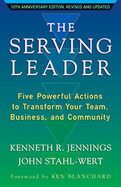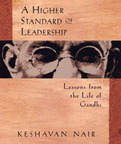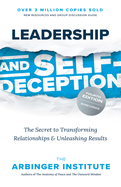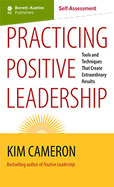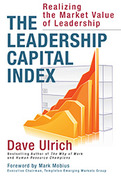2016
Five Powerful Actions to Transform Your Team, Business, and Community, 10th Anniversary Edition, Revised and Expanded
It's people who make organizations great, so how can leaders best help their people achieve that greatness? As Ken Jennings and John Stahl-Wert show in this new edition of their bestseller, you can't just demand greatness—you have to inspire it. The most effective leaders don't just stand in front of their people, they stand behind them too. As one of the characters in the book notes, “You qualify to be first by putting other people first.” This concept sounds paradoxical, but it leads to extraordinary outcomes—and The Serving Leader shows precisely how and why.
While Jennings and Stahl-Wert use a compelling fictional story to outline the basics of Serving Leadership, all the characters in it are based on real people, the organizations depicted are based on real organizations—and the results they achieved are what really happened. This edition features a new foreword by Ken Blanchard, a new introduction, and a new chapter checking back in with Mike, the main character, to see what he has learned in the twelve years since he embraced Serving Leadership
On one level this is the most practical guide available to implementing Serving Leadership; on a deeper level, it is a book about the personal journey of growth that real leadership requires. Great organizations are great because they're filled with people who freely choose to do their very best. It's a maddeningly simple concept yet stunningly hard to execute. Jennings and Stahl-Wert show leaders how to earn that kind of commitment.
o How to embody the values of service, truth, and personal responsibility in leadership roles
o Insights about management, leadership, and purpose from a successful businessman and perceptive student of Gandhi's life and writings
Though Gandhi is one of the most written-about figures of the twentieth century, this is the first book to apply lessons from his life to the practical tasks faced by contemporary leaders-from corporate managers and executives to government administrators, nonprofit professionals, educators, and others.
In times shaped by colonialism, dictatorships, and two World Wars, Gandhi demonstrated that an idealist could also be a practical and effective leader. In our times of increasing cynicism about the quality of leadership we can expect and aspire to, Keshavan Nair reminds us that, "We are all engaged in leadership, in practicing it and selecting those who will lead." In A Higher Standard of Leadership, he offers a pragmatic guide based on the concepts Gandhi exemplified:
o leadership is service, not a path to power and privilege;
o effective goals, decisions, and strategies can be guided by moral principles;
o a single standard of conduct, based on absolute values, should be maintained in both public and private life.
A lifelong student of Gandhi's teachings and a businessman with more than 25 years of experience in corporate and governmental leadership development, Nair is uniquely positioned to bridge the two worlds. Using illustrative examples from Gandhi's life and writings, he identifies commitments-to conscience, openness, service, values, and reduced attachments-and describes the courage and determination necessary to work and lead by them. In simple and direct language, he explores the process of making decisions, setting goals, and implementing actions guided by the spirit of service and commitment to values that is essential to the realization of a higher standard of leadership in our workplaces and communities.
- Shows America's economic system to be at odds with its social and political goals and proposes a system designed to increase personal freedom
- Questions the most basic assumptions that drive our economic system, and argues that its entire structure must be challenged
Significantly revised throughout, this edition includes updated stories, brand new content, and a practical group discussion guide.
Over two decades since first being published, Leadership and Self-Deception continues to help readers discover and overcome the persistent lies that are at the heart of the people-related dysfunction that plagues relationships and hinders organizational results. Told through an engaging story, this book reveals the ways we blind ourselves to our true motivations and unwittingly sabotage our efforts to achieve success and rebuild broken relationships.
Completely rewritten throughout, this fourth edition features important updates:
- A broader cast of characters who resonate with a wide and diverse audience
- Updated stories and examples that help readers immediately apply these timeless concepts to the modern workplace
- An individual study and group discussion guide to facilitate personal and team discoveries
- Practical guides to apply the tools on a personal, team, and organization-wide level
Explore the ideas that have helped millions of people and thousands of organizations sustainably transform relationships and results.
Making the Grass Greener on Your Side is the story of how Ken Melrose adopted a philosophy of leading by serving and made it work in a real-world-and often challenging-situation. His mission as CEO of The Toro Company has been to build an environment that not only serves the needs of the corporation, but also provides a climate for its constituents-the employees-to grow and develop as human beings. In Making the Grass Greener on Your Side, he shows how cultivating an environment for individual growth creates a win-win situation for the company and the employee.
In the "servant leadership" model, leaders operate from a principle-centered base by working for and serving the rest of the organization. This approach allows employees to grow and contribute in ways that best serve the long-term interests of the company. Melrose tells of both the successes and struggles in applying the model to the Toro environment.
This book follows Toro's history-beginning in 1979, when Toro had reached a peak of unparalleled expansion and development, to the brink of disaster in 1981, and back again. Readers will learn about the company's cut-backs and sacrifices, its self-examination, its decision to embark on the path of servant leadership, and its ultimate return to profitability and customer satisfaction. Melrose recounts his own process of refining his personal commitment to leadership principles and gaining the courage to implement fundamental changes. He tells which culture initiatives and leadership strategies the company applied, which worked, and why.
Making the Grass Greener on Your Side helps readers take stock of where their company is now, and shows how to cultivate the soil and prepare a "seed-bed" that will allow for the deep rooting of value-centered leadership principles. Melrose tells how to develop a culture that will allow for sustained growth, and describes the abundant fruits of the long-term approach that occur all along the journey.
- By the CEO of The Toro Company, a member of the Fortune 500
Product: Online streamed self-assessment application (not downloaded), limited one-year subscription (5 tests or 12 months, whichever comes first), password controlled
Duration: 68 questions in ten categories (the first five related to Positive Leadership book; the second five related to the Practicing Positive Leadership book): 1) Positive Climate, 2) Positive Relationships, 3) Positive Communications, 4) Positive Meaning, 5) Personal Managemnt Interviews, 6) Create a Culture of Abundance, 7) Developing Positive Energy, 8) Accomplishign Everest Goals, 9) Deliver Negative Feedback Positively, 10) Apply in Organizations. The self-assessment takes 15-20 minutes to complete.
Results: You will receive a radar graph that shows your relative strenths and weaknesses in the ten areas described above. The author also offers interpretation of your results and provides references for each of the ten areas in his two books, Positive Leadership (questions 1-24) and Practicing Positive Leadership (questions 25-68). By reading your results, you can gain important insights on how to practice positive leadership in your organization. The author addresses next steps both for the individual and groups. There are also opening and closing statements from the author, the ability to compare current and former results, and a print option.
BASED ON THE BOOK: PRACTICING POSITIVE LEADERSHIP Over a decade ago, Kim Cameron and some colleagues decided that rather than analyze what went terribly wrong with organizations and how to prevent it, they would look at what went extraordinarily right and how to replicate it. This was the birth of positive organizational scholarship, a new field that focused on what they called "positive deviance"-outcomes that far exceeded normal success.
In his previous book Positive Leadership, Cameron outlined four leadership strategies-Positive Climate, Positive Relationships, Positive Communications, and Positive Meaning-that characterize exceptionally high-performing organizations. Here he takes these strategies further by laying out tactics for implementing them:
- Creating a Culture of Abundance: five specific steps leaders can take to create an organizational culture that enables members to experience vitality, flourishing, and engagement
- Developing Positive Energy Networks: tools and practices for cultivating positive energy in oneself and for diffusing it throughout the organization
- Delivering Negative Feedback Positively: techniques for delivering difficult but necessary messages in ways that build and strengthen relationships
- Establishing and Achieving Everest Goals: guidelines for setting goals that have all the characteristics of SMART goals but go far beyond them
- Applying Positive Leadership in Organizations: a powerful tool for determining exactly how to implement positive leadership practices in the particular circumstances of your organization
Study after study (some of which are cited in the book) has shown that companies practicing positive leadership far outperform their competitors. So virtue may be its own reward, but it also delivers breakthrough results that any organization can achieve thanks to Kim Cameron's concise, how-to guide.
PURCHASER AND USER NOTE: If you are an individual consumer newly purchasing the assessment, go directly to the shopping cart by clicking the "add to cart" icon to your left. If you are a member of an organization that has purchased a bulk order, or if you already bought the assessment in the last 12 months and are retaking it now using the original Access Key to retake the assessment please log in here. New registrants: Please enter your "Access Key" into the input field to enter the self-assessment for the first time. A note to frequent purchasers: You cannot use your current bkconnection.com password for this product; you must create and use a new password. For any questions, please contact the support desk at 800-929-2929 (8 am-9 pm Eastern U.S. time, Monday through Friday), or [email protected]. Thank you.
We know that financial outcomes can predict about 50 percent of a firm's market value. Intangibles like strategy, brand, talent, R&D, innovation, risk, and so on account for the rest. But leadership underlies them all. And despite how important we know it is, we've been forced to rely on subjective and unreliable ways to measure its impact—until now.
In this landmark book, leadership scholar, author, and consultant Dave Ulrich proposes a “leadership capital index”—a Moody's or Standard and Poor's rating for leadership. Drawing on research from investors and business leaders, and synthesizing the work of dozens of consulting firms and leadership experts, Ulrich analyzes two broad domains, each comprising five factors. The individual domain includes personal qualities, strategic prowess, execution proficiency, interpersonal skills, and fit between the leader's style and the organization's market promises. The organizational domain encompasses a leader's ability to create customer-focused cultures, manage talent, demand accountability, use information to gain competitive advantage, and set up work processes to deal with change.
Ulrich details rigorous metrics and methods for evaluating leaders on each of these factors. The result is a groundbreaking book that will be of vital interest not only to equity and debt investors but also to boards of directors, executive teams, human resource and leadership development professionals, government and ratings agencies—and of course to leaders themselves.


